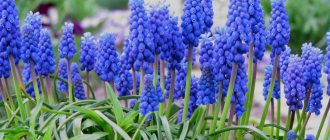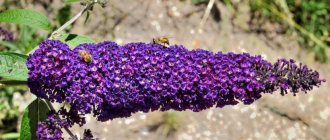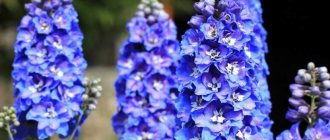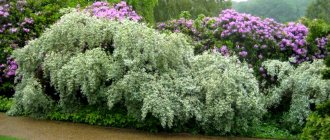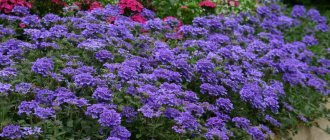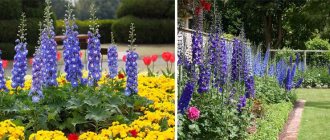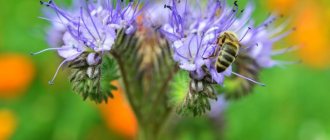If there is a shady corner in the garden in which you want to plant something, a star or astrantia will help solve the problem. Delicate, round and at the same time star-shaped flowers of this herbaceous plant shine like beads in a brooch. These are original perennials and a good companion for other plants. How to grow astrantia, planting and caring for the plant in open ground are discussed in this article.
Description of the astrantia flower
Astrantia has low-branched straight stems no more than 1 meter high. The leaves are palmate-lobed and form a single basal rosette. They produce small flowers, usually in light shades. The bush is popularly called a star because of the umbrella-shaped inflorescences that look like stars. The involucre leaves are large and bright green. The flowering period occurs in May and continues until autumn. This time is enough for the development of the fetus - the two-seed.
Astrantia is a honey plant and therefore strongly attracts bees. The plant is able to develop normally in unfavorable conditions, since it has high winter hardiness and resists negative factors.
The flower is planted in small groups. It interacts well with neighboring plants, for example, geranium, lungwort, heuchera, hosta. Astrantia remains fresh for a long time after cutting, so it is often used when creating bouquets.
In addition to its attractive external qualities, the plant is easy to plant and care for.
Peculiarities
Astrantia, or star, is a member of the Umbrella family. This herbaceous representative of the flora can be found in different parts of Europe. The culture is also widespread in the Caucasus. In American cities, people have been cultivating it since the 16th century. Nowadays, breeding scientists have developed a large number of varieties of this plant, which often live in garden plots.
The description of the star indicates that it is characterized by straight, weakly leafy, low-branched shoots . In height, this representative of the flora reaches from 15 to 100 centimeters. The leaf blade of the plant is characterized by a finger-like structure. The foliage is collected in a basal rosette. The inflorescence is simple, umbrella-shaped, very similar to a star.
The inflorescence contains many flowers of ruby pink, white and other shades. Wrapper leaves with a rich green color add decorative value to the crop.
The flowering phase of astrantia begins in May and ends in early autumn. The fruit of the herbaceous plant is presented in the form of a two-seed.
The crop is considered an excellent honey plant, so a large number of bees flock to it.
This representative of the flora is undemanding and can take root in almost any area due to its ability to withstand negative environmental factors.
However, astrantia is not the only star. There is also Hacquetia epipactis (epipactis star) - a rhizomatous perennial, the only species in the genus. According to the botanical description, Epipactis does not belong to Astrantia, but is its relative, since it also belongs to the Umbelliferae family. And also in spring, yellow inflorescences appear on its bushes, vaguely reminiscent of astrantia flowers.
Therefore, you should not confuse them. And from now on we will call astrantia an asterisk.
Types and varieties of astrantia
The plant is widespread in Europe and Western Asia. The cultivation of some varieties began in the 16th century.
Common types and varieties:
| View | Description | Variety | Description |
| Astrantia Major | It is found in Ukraine, Moldova, the Baltic countries and Belarus. It chooses forest edges and lawns near coniferous forests as a place of growth. Does not exceed 70 cm. | Moulin rouge | It is distinguished by red inflorescences, the involucre leaves are much darker. If the bush grows in an area with plenty of sunlight, the flowers become bright and large. |
| Ruby Wedding | It grows up to 65 cm in height, the flowers are dark red. The best condition for growth will be a darkened area of soil, near trees. | ||
| Claret | Flowers and wrappers are burgundy. The height of the plant does not exceed 55 cm. It blooms in mid-summer, and the fruits begin to form towards the end of September. It is better to grow a flower in the shade; it is perfectly cultivated in a container. | ||
| Diva | The highlight of the variety is the dark red flowers with lighter wrappers. The plant is approximately 70 cm in height. The variety thrives both in direct sunlight and in dark places. | ||
| Venice | A special feature of this variety is the ruby hue of the inflorescences. | ||
| Lars | Reaches a height of approximately 75 cm, has inflorescences of a rich pink color. | ||
| Sunningdale Variegata | Distinguished by pale lavender inflorescences. | ||
| Rosea Symphony | Grows up to 70 cm, has pink inflorescences and pale pink wrappers. | ||
| Rosea | Height no more than 60 cm, characterized by spotted leaf blades and bright pink inflorescences. | ||
| Snowstar | White color of flowers, white wrappers with characteristic green spots. Does not exceed 70 cm. Grows best in dark places. | ||
| Abbey Road | Red in color, the inflorescences have a purple tint, the wrappers are several tones darker. | ||
| Astrantia Maxima (Largest) | Grows in the Caucasus. It reaches a height of about 70 cm, has a powerful and long root system. The leaves are tripartite. The simple umbrella-shaped inflorescences are 4.5 cm in diameter and include pink flowers. The involucre leaves are pale red in color, about 1 cm long, and have a filmy appearance. It blooms in August, but the beginning may take until September. | ||
| Astrantia Carniolica (Carniolian) | Perennial plant with palmately divided plates. The inflorescences consist of light flowers. The most common variety is rubra. Reaches 70 cm. Flowering occurs in late spring and ends after 3 months. | ||
Some gardeners cultivate Bavarian, three-cut, hellebore species, as well as varieties of large astrantia - Biberstein and Alba. They differ from each other in color shade, height, flowering period and place of territorial localization.
Growing astrantia from seeds
Growing astrantia from seeds is more difficult than vegetatively, but it is much more economical. The main thing is to consider several important features on which further development and growth rate will depend. First of all, you need to familiarize yourself with the nuances of sowing, and then start growing seedlings.
Sowing astrantia seeds in the ground
One of the ways to propagate astrantia is self-sowing. One should take into account the fact that such seedlings have incomplete parental characteristics than propagation by cuttings.
Therefore, gardeners recommend using other methods for growing shrubs. Freshly harvested seeds must be planted closer to winter so that seedlings appear in the first months of spring.
Sowing astrantia seeds for seedlings
It is best to plant astrantia through seedlings; in this case, the seeds are sown in special boxes in the spring.
For high-quality development, stratification should be ensured - seeds from the autumn harvest are placed in the refrigerator in the vegetable department for 2-3 months. Before doing this, you must read the information on the packaging. If the manufacturer has noted that stratification has been carried out, then this activity can be abandoned.
The seeds are sown in prepared soil; it should be light and not contain special components.
They are distributed over the surface of the soil, and the substrate is laid on top in a thin layer. The boxes are covered with film or glass, after which they are placed in a place with moderate humidity and a constant temperature of +22 °C. When the first seedlings appear, you need to get rid of the shelter.
Caring for astrantia seedlings
With further development of seedlings, place the boxes in a lighted room. The seedlings need to be thinned out after 7-14 days. Small plants should be watered periodically when the top layer of soil dries out; the substrate should be loosened regularly. When ventilating, care must be taken to protect the planting from drafts.
Reproduction
Astrantia is propagated by dividing bushes in spring or autumn and by seeds. Sowing by seeds is very effective, but plants obtained from self-collected seeds may not reproduce the varietal characteristics. Therefore, it is better to reproduce by dividing the overgrown maternal samples. Rejuvenation of old specimens by division is carried out every 4 years.
Astrantia often disperse on their own. Signal to collect - the seeds are almost scattered. You need to place a bag under the inflorescences and tilt the flower stalks. Then the seeds fall out easily. Empty inflorescences are left on plants; they will decorate the garden in autumn and winter, rustling gently in the wind.
Photo. The seeds are ready for harvest. Dry inflorescences with seeds.
Most gardeners believe that propagating astrantia by seeds is not easy. The seeds must be very fresh and sown immediately after ripening, as they quickly lose their viability. To produce 1000 plants, 10 g of seeds are needed.
If after sowing the astrantia seeds do not germinate, the pots are placed in a cool place to put them into a dormant state. Then, as soon as the first leaves appear, you need to move them to a warm place.
Temperature conditions for germinating astrantia seeds and growing seedlings
| Seedling age | Temperature, ° C |
| 2-4 weeks after planting | 18-22 |
| Next 4-6 weeks | 0-4 |
| After 6 weeks the temperature is gradually increased | 10-13 |
After this period, the seeds germinate in about 4-6 weeks.
However, the ease of crossing varieties and the difficulty of maintaining variety purity cause many problems and may not satisfy discerning gardeners. The varieties "Shaggy" and "Buckland" do not produce seeds.
Planting astrantia in open ground
The health and quality of future plants depends on the quality of planting in open prepared soil. Therefore, this process must be approached as responsibly and carefully as possible.
It is planned to study the features of planting astrantia. Even a novice gardener can cope with the task, since the shrub is not picky about environmental conditions and can grow in almost any soil.
When to plant
It is recommended to plant seedlings in late spring or early summer. Having previously familiarized yourself with the characteristics of the variety, since a sunny place is more suitable for some plants, while a dark place is more suitable for others. The soil must be loose and fertile, but there are no special requirements for the chemical composition.
How to plant
Place the seedlings at a distance of 35 cm from each other. The hole must be made so that the plant is at the same depth as at the stage of growing seedlings. The soil around the bushes needs to be compacted and watered abundantly. After just 3 years, the first flowers can be seen on the astrantia.
Possible difficulties
Refusal to flower in the first years of life is not a whim or a consequence of improper care. Astrantia should gain strength; seedlings usually bloom 3 years after planting.
Astrantia is not aggressive, gets along well with its neighbors, but will not miss the opportunity to expand its territory. To prevent propagation by self-seeding, inflorescences should be removed in time. It is not recommended to tear them off; it is better to use a sharp knife or scissors.
Over time, the Astrantia bush disintegrates and loses its decorative properties.
In this case, it is necessary to carry out a rejuvenating division of the clump. The best time is early spring. Over the summer, the “newcomers” settle in, winter well, and next spring they delight with flowering. Editorial team LePlants.ru
Caring for astrantia in the garden
With normal rainfall, no special care is required. During periods of drought, the plant should be watered once a week, which will allow it to bloom once. If you keep the soil moist throughout the growing season, the shrub will bloom again. Immediately after watering or rain, loosen the top layer of soil around the plant and remove weeds. To save time, mulch the area with peat or humus.
To prolong flowering and reduce the likelihood of self-seeding, wilted inflorescences must be removed. After the first, cut off all flower stalks, this will be an additional stimulation for the formation of arrows, and besides, this measure allows you to create a symmetrical and dense bush.
Fertilize in the first months of spring. Enrich poor soil once every three years with phosphorus-potassium fertilizer in July or August. Apply substances in liquid form.
Astrantia in the landscape
Due to the unique visual qualities of the plant, designers love to use it. Astrantia is suitable for creating flower beds and decorating shady corners of the garden, for example, near trees and other bushes.
Low-growing varieties are used for rock gardens and decorating swimming pools.
The flowerbed, made up of several types of stars, has an original appearance. Modest bushes of the plant lead to the effect of weightlessness and lightness: next to the spreading leaves of astrantia there are flowers of red, white, and pink shades.
Astrantia is a perennial green plant with unusual flowers. It is capable of growing in the harshest conditions and is completely unpretentious in care, so it becomes the choice of novice gardeners. You can place roses with large flowers or lilies as neighbors near the bushes. This combination will create an overall concept that will not only look attractive, but also smell good.
